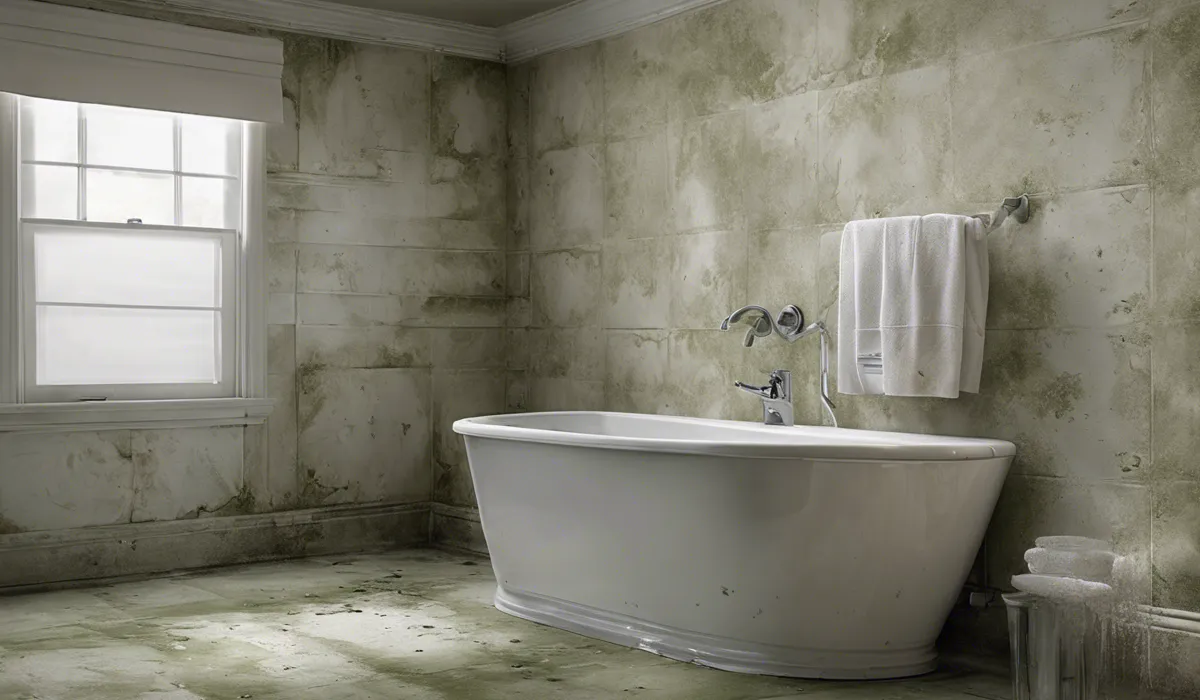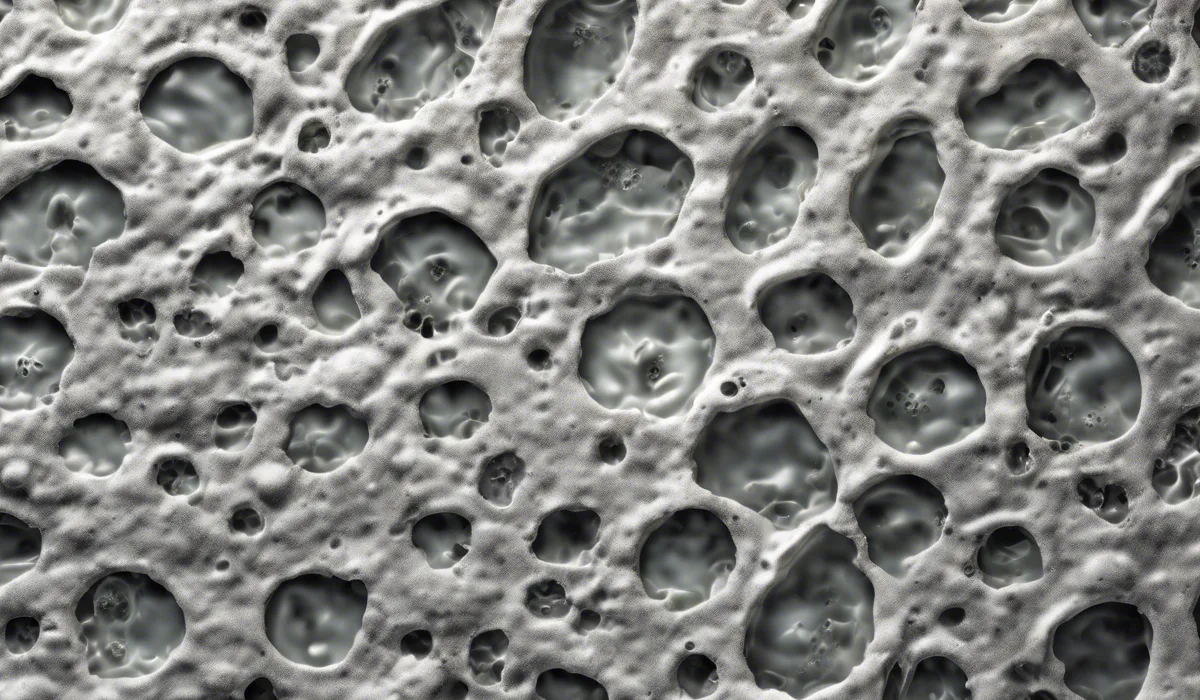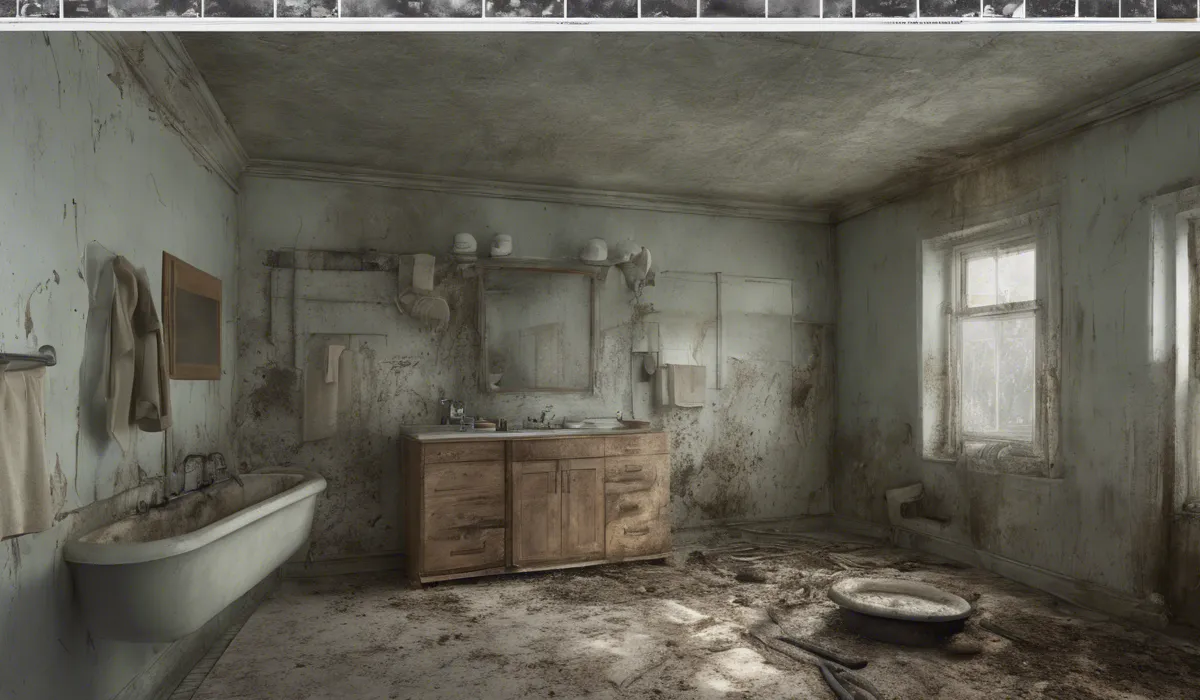CLR Mold and Mildew Stain Remover contains chemicals that can be toxic if ingested or improperly handled. Its fumes may irritate the eyes, skin, and respiratory system. Always use it in well-ventilated areas and follow the safety instructions on the label closely.
Understanding CLR Mold and Mildew Remover

Description of CLR Mold and Mildew Remover
CLR Mold and Mildew Stain Remover is a widely-used cleaning product specifically formulated to tackle tough stains caused by mold and mildew.
It is a part of the CLR product line, which is known for dealing with various household cleaning challenges.
The remover is designed to eliminate unsightly and potentially harmful mold and mildew buildup on a variety of surfaces, including ceramic tile, glass, and grout.
The Active Ingredients in CLR Mold and Mildew Remover
The effectiveness of CLR Mold and Mildew Stain Remover comes from its active ingredients, which include bleach-based compounds and other proprietary chemicals.
These ingredients work together to break down and remove the stains without the need for rigorous scrubbing.
The presence of bleach not only cleans but also disinfects the treated areas, killing the mold spores and inhibiting further growth.
How CLR Mold and Mildew Remover Works on Mold and Mildew?
When applied to affected areas, CLR Mold and Mildew Stain Remover begins to work on contact.
The solution penetrates the porous surfaces where mold and mildew thrive, breaking down the structure of the stains.
The bleach in the formula acts as an oxidizing agent, effectively whitening the stains and killing the spores.
This results in cleaner surfaces and a reduction in the likelihood of future mold and mildew growth.
Health Risks Associated with Mold and Mildew

Health Effects of Exposure to Mold and Mildew
Exposure to mold and mildew can lead to a variety of health issues, particularly for individuals with allergies, asthma, or weakened immune systems.
Common symptoms include nasal stuffiness, throat irritation, coughing or wheezing, eye irritation, or, in some cases, skin irritation.
Long-term exposure to mold may increase sensitivity and lead to more serious health problems.
Potential Toxic Effects of CLR Mold and Mildew Remover
While CLR Mold and Mildew Stain Remover is efficacious in mold and mildew elimination, it contains chemicals that can be toxic if ingested or improperly handled.
Its fumes may irritate the eyes, skin, and respiratory system. For this reason, it is crucial to handle the product with care and adhere to the safety instructions provided on the label.
Vulnerable Populations and Exposure Concerns
Certain populations are more vulnerable to the effects of both mold and chemical cleaners.
This includes children, the elderly, pregnant women, and those with pre-existing respiratory conditions.
For these groups, it’s especially important to minimize exposure to mold and to use mold and mildew removers in a safe and controlled manner.
Safety Measures and Best Practices

Proper Use of CLR Mold and Mildew Remover
To safely use CLR Mold and Mildew Stain Remover, it is essential to read and follow all instructions on the product label.
The area should be well-ventilated, and if the space does not have adequate airflow, fans or open windows can help circulate air.
It is advisable to test the product on a small, inconspicuous area first to ensure that it does not damage the surface being cleaned.
Ventilation and Protective Gear Recommendations
Using CLR Mold and Mildew Stain Remover in a well-ventilated space is crucial to avoid inhaling fumes.
In addition, wearing protective gear such as gloves, goggles, and a mask can prevent skin and eye irritation, as well as inhalation of potentially harmful vapors. Ensuring personal safety while using cleaning products is paramount.
Alternatives to Chemical Mold Removers and Natural Solutions
For those seeking a more natural approach to mold and mildew removal, alternatives to chemical removers are available.
Vinegar, baking soda, and tea tree oil are all natural substances that have been shown to effectively combat mold.
These options are not only safer for the user and the environment but also can be just as effective when used properly.
For larger mold issues or persistent problems, professional remediation may be necessary to ensure a safe and thorough resolution.
FAQs About CLR Mold and Mildew Toxicity
Is CLR Mold and Mildew Stain Remover toxic if ingested?
Yes, CLR Mold and Mildew Stain Remover is toxic if ingested and can lead to serious health risks. Immediate medical attention is recommended in case of ingestion.
Can the fumes from CLR Mold and Mildew Stain Remover cause irritation?
Yes, the fumes from CLR Mold and Mildew Stain Remover may irritate the eyes, skin, and respiratory system.
Is it safe to use CLR Mold and Mildew Stain Remover without ventilation?
No, it should always be used in well-ventilated areas to prevent irritation or other harmful effects from the fumes.
What should I do if CLR Mold and Mildew Stain Remover comes into contact with my skin?
If CLR Mold and Mildew Stain Remover comes into contact with your skin, rinse immediately with plenty of water, and seek medical advice if irritation persists.
Are there any special handling instructions for using CLR Mold and Mildew Stain Remover?
Yes, it is important to follow the safety instructions on the label closely, which include using gloves, ensuring good ventilation, and avoiding contact with eyes and skin.
Final Thoughts
CLR Mold and Mildew Stain Remover contains potentially harmful chemicals that present toxicity risks if ingested or mishandled.
Its vapors can irritate the eyes, skin, and lungs, necessitating the use of the product in areas with good ventilation.
Strict adherence to the provided safety guidelines is essential to ensure safe and effective use.
